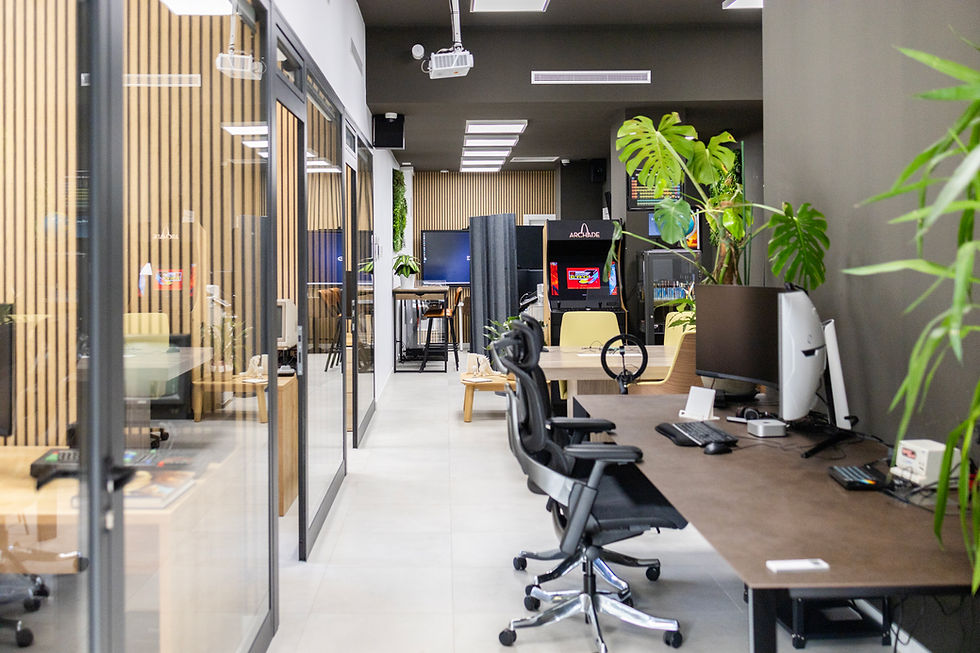Can AI Be Creative? Welcome to the Age of Human + Machine Art
- Brainlab Fira
- May 12
- 3 min read
Updated: Oct 3
For most of history, creativity has been a sacred part of what makes us human. It's the spark behind every masterpiece, every melody, every story. And while we've invited technology into our studios before—photography, synthesizers, Photoshop—there's something different about artificial intelligence. This isn’t just a new tool. It’s a co-creator.
Today, machines are helping us paint, write, compose, and even brainstorm ideas. Some people are excited. Others are deeply uneasy. So let’s talk about it: What does creativity look like when you’re sharing the stage with an algorithm?
The AI + Human Creative Process
The truth is, most creatives using AI today don’t think of it as a replacement—they think of it as a collaborator. A creative partner with limitless energy and some pretty wild ideas.
Let’s say you’re a visual artist and you’re stuck. You have a vague idea: “a dreamlike forest city floating in the sky.” In the past, you’d sketch it out, maybe look for references. Now, with tools like Midjourney, DALL·E, or Stable Diffusion, you can describe your vision in a sentence, and the AI gives you images—some beautiful, some strange, all sparking new ideas.
Writers use tools like ChatGPT to beat writer’s block, outline their stories, or create background lore for fictional worlds. Musicians experiment with AI-generated chord progressions or harmonies. Filmmakers use AI to pre-visualize scenes or edit faster than ever.
It’s not replacing the artist—it’s redefining the workflow. It turns creativity into a conversation: “What if…?” answered in seconds.
Is It Real Art?
Here’s the question that causes the most debate: If a machine makes something beautiful, is it still art?
The answer depends on what you believe art really is.
Some argue that art needs a soul, a story, a human experience behind it. AI doesn’t suffer heartbreak. It doesn’t fall in love. It doesn’t stay up all night agonizing over a melody. It can’t “feel,” so how can it create?
But others argue that art is more about the effect than the process. If a viewer looks at an AI-generated image and feels something—wonder, sadness, nostalgia—does it matter that a machine made it?
Most AI-generated work isn’t completely independent anyway. There’s still a human writing the prompt, curating the output, tweaking details, or combining pieces. The magic lies in how the tool is used, not just in the tool itself.

Creative Industries Are Already Changing
Whether you realize it or not, AI is already working behind the scenes in creative industries. In marketing, it's writing ad copy and generating hundreds of design variations for A/B testing. In film, it’s being used for automated editing, color correction, and scriptwriting assistance. In publishing, some novels already have AI-generated chapters—or were plotted with the help of large language models.
Even musicians are releasing tracks co-written with AI, and streaming platforms are using AI to analyze listener mood and recommend the perfect soundtrack.
The result? Creative professionals can move faster, produce more, and test ideas without needing a whole team. For freelancers and indie creators, AI can level the playing field. You no longer need a big budget to make something polished.
The Ethics Are Real (and Complicated)
But this new world brings big questions. The most pressing? Who owns AI-generated content?
When you type a prompt into an AI and it spits out an image, who has the copyright? You? The developer? No one?
And what about the data the AI was trained on? Many of today’s models learned from publicly available art, music, and writing—sometimes without permission. Some artists have already found AI mimicking their signature style, even though they never opted in.
There are also concerns about flooding the internet with cheap, low-quality “AI art,” making it harder for human artists to stand out—or earn a living.
The solution? Clear guidelines, better attribution systems, and transparent training practices.
We need rules, but we also need respect—both for the tool and for the people whose work trained it.
Human Creativity Isn’t Going Anywhere
Here’s the good news: history shows us that new creative tools don’t erase what came before. Photography didn’t kill painting. Synthesizers didn’t destroy live music. And digital art didn’t end traditional illustration.
Instead, each new tool expanded what was possible.
AI is doing the same. It won’t replace creativity—it will evolve it. It will force us to ask new questions, push new boundaries, and think more deeply about what it means to make something meaningful.
Creatives who embrace AI aren’t giving up their voice. They’re finding new ways to amplify it.
Final Thought: A New Kind of Muse
At the end of the day, art isn’t about perfection—it’s about connection. Whether that connection is sparked by oil paint or pixels, a ballad or a bot, is less important than the fact that it moves you.
So maybe the real question isn’t, “Can AI be creative?”
Maybe it’s this: What can we create when human intuition and machine intelligence work together?
We’re about to find out.




Comments